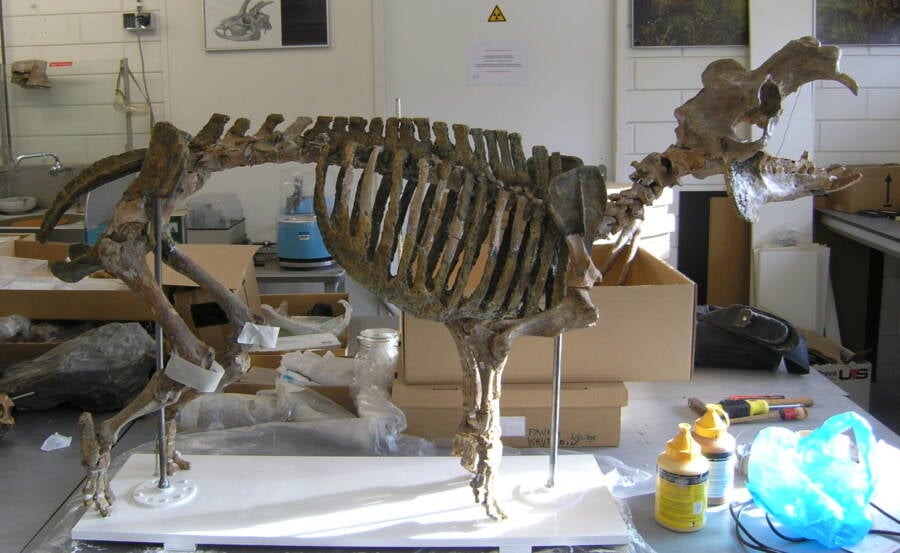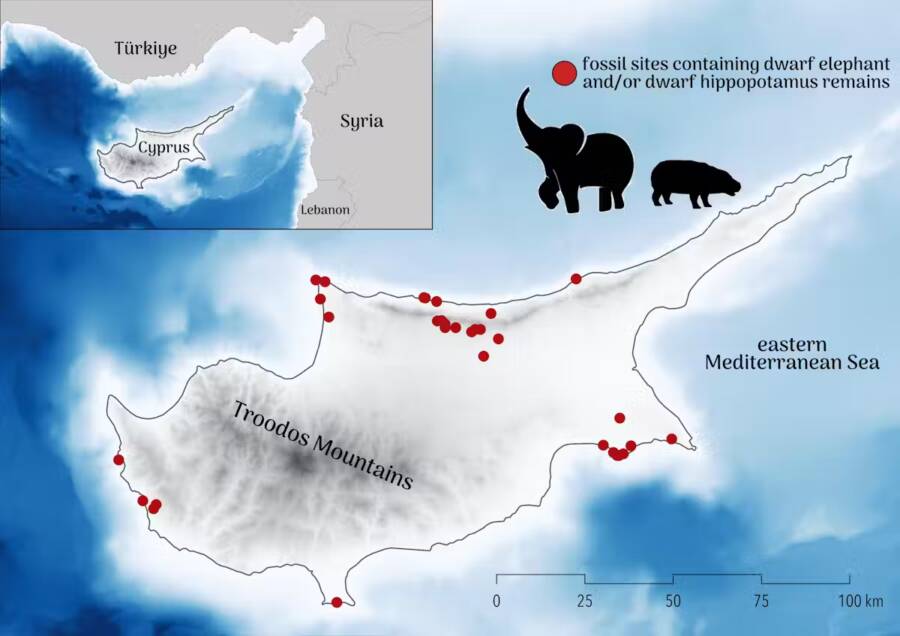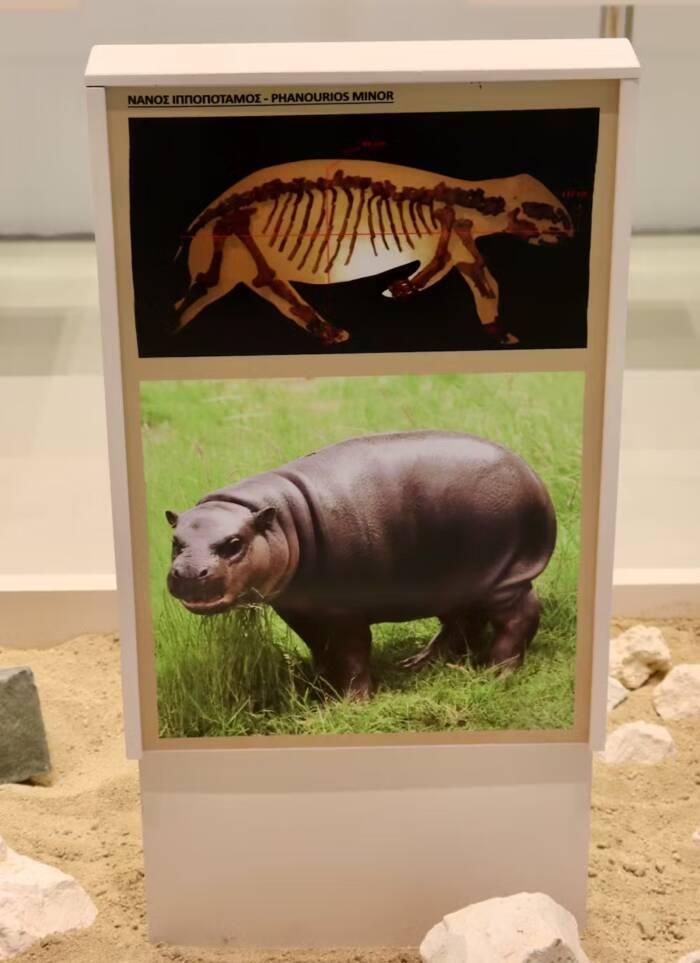Cypriot dwarf hippos and elephants were a fraction of the size of their mainland counterparts, but Stone Age humans likely hunted them to extinction 12,000 years ago.

George Lyras/Wikimedia CommonsThe composite skeleton of a Cypriot pygmy hippopotamus.
Small populations of Stone Age humans might have driven dwarf hippopotamuses and elephants to extinction on the island of Cyprus, according to a new study.
Like other Mediterranean islands, Cyprus was home to tiny species of hippos and elephants following the last Ice Age, but evidence suggests these miniature breeds may have been hunted to the point of extinction when humans arrived.
For a long time, paleontologists believed that the disappearance of these species had nothing to do with humans, but new research is challenging this idea, suggesting that Stone Age hunters did indeed play an instrumental role in the extinction of these ancient megafauna.
Human Contributions To The Extinction Of Dwarf Hippos And Elephants

CJA Bradshaw/Flinders UniversityThe coast of Cyprus, where dwarf hippos and elephants once roamed.
As researchers Corey J. A. Bradshaw, Christian Reepmeyer, and Theodora Moutsiou explored in a report published on The Conversation, there is substantial evidence to indicate that humans significantly contributed to the extinction of dwarf hippos and elephants on Cyprus.
Historical evidence shows that boar-sized hippos and elephants no bigger than horses once lived on Cyprus and other Mediterranean islands. This phenomenon is known as island dwarfism, a process in which large mainland species evolve to become smaller in response to fewer resources and predators on islands. As researchers explained, Cypriot pygmy hippos were actually the smallest dwarf hippos in the Mediterranean, with genetic data suggesting they diverged from the common hippopotamus around 1.5 million years ago. Likewise, the Cypriot dwarf elephant was less than 10 percent of the size of its mainland ancestor.

CJA Bradshaw/Flinders UniversityA map showing the approximation of fossil sites where dwarf hippo and elephant remains have been found.
For millennia, these small creatures thrived on the Mediterranean islands, but when humans arrived roughly 14,000 years ago, that started to change. Previously, experts suggested that the human population on the Mediterranean islands would not have been large enough to hunt these animals to extinction, but that is now being called into question.
In fact, according to a new study published by the research team, the human population likely grew to several thousand within a few hundred years — more than enough to wipe out dwarf hippos and elephants.

CJA Bradshaw/Flinders UniversityLimestone caves in Cyprus, where the animals’ remains have been found.
To illustrate their point, researchers built computer models to demonstrate what could have happened to the mini-megafauna after Stone Age people arrived, factoring in the efficiency of human hunters, how long it would take to process each carcass, and how much energy the people needed to survive.
“We found that even a small human population, numbering between 3,000 and 7,000, could have easily driven first dwarf hippos, and then dwarf elephants, to extinction,” the study authors wrote. “Our model showed the process would have taken less than 1,000 years. This prediction matches the sequence of extinction inferred from the palaeontological record.”
The Extinction Of Megafauna In Cyprus Illustrates A Larger Trend

CJA Bradshaw/Flinders UniversityThe bones and teeth of Cypriot dwarf elephants.
As for why the research team honed in on Cyprus in particular, they wrote:
“Cyprus was the perfect place to test our models because the island offers an ideal set of conditions to examine whether the arrival of humans ultimately led to the extinction of its megafauna. This is because Cyprus was a relatively simple test case — a small island of around 11,000 square kilometres [4,200 square miles] at the time, with only two species of megafauna.”

CJA Bradshaw/Flinders UniversityA dwarf hippo’s skeleton alongside a photograph of what they may have looked like.
But it wasn’t only Cyprus where the extinction event occurred. This sort of rapid environmental change took place on nearly every Mediterranean island and even on larger pieces of land like Australia. The extinction of these species in Cyprus simply serves as one example of how even small human populations can entirely upend an ecosystem with catastrophic consequences.
Obviously, there is nothing to be done about it now, given that thousands of years have passed since these species went extinct. However, this study could serve as a potential warning for the future. There has never been a species on Earth more impactful as humanity — for better or for worse.
After reading about how humans may have driven dwarf hippos and elephants to extinction, see our list of extinct animals that should be cloned back into existence. Then, learn all about de-extinction.





